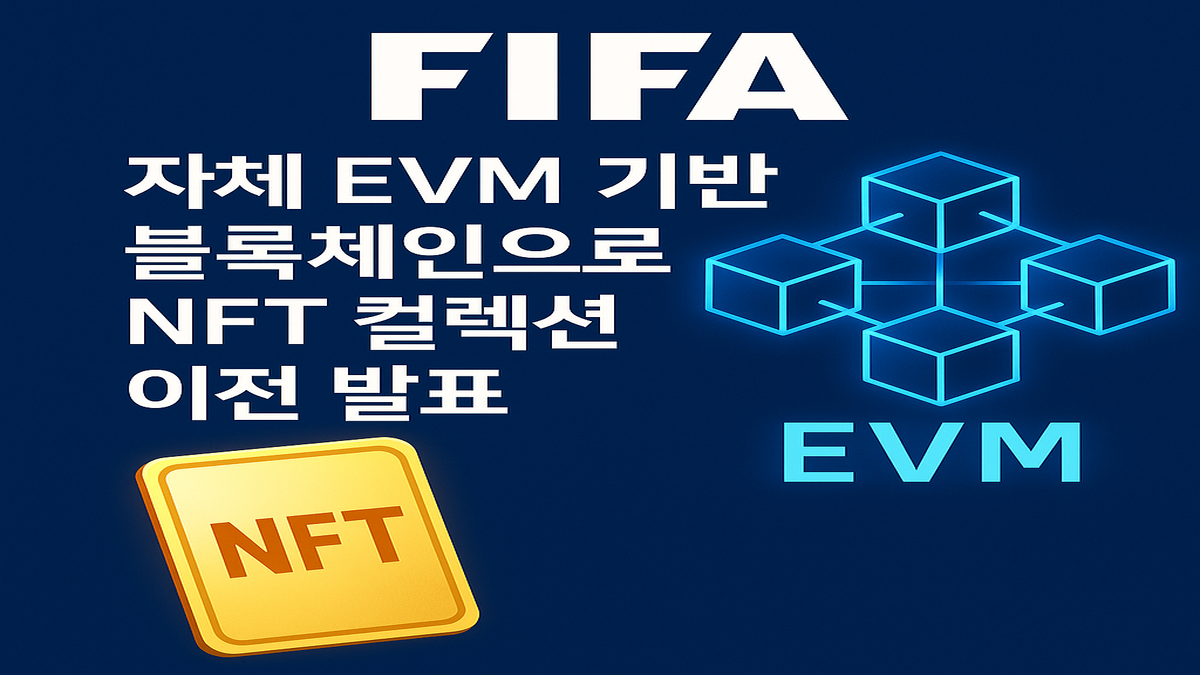[K-Bridge/Samuel] Arthur Hayes, the co-founder of BitMEX, has recently reaffirmed his bold prediction that Bitcoin (BTC) will reach $1 million.
This assertion comes amidst FIFA’s announcement of plans to develop an Ethereum-compatible blockchain to enhance its digital infrastructure.
Hayes’ confidence in Bitcoin stems from its potential to revolutionize the financial landscape, while FIFA’s initiative signifies a growing acceptance of blockchain technology in mainstream sectors.
The convergence of these two developments highlights a pivotal moment for both cryptocurrency and global sports governance.
By reading this article, you will gain insights into Hayes’ perspective on Bitcoin, the implications of FIFA’s blockchain plans, and the broader impact on the crypto ecosystem.
Arthur Hayes’ Vision for Bitcoin’s Future
The Rationale Behind the $1 Million Prediction
Arthur Hayes’ forecast of Bitcoin reaching $1 million is rooted in several key factors.
Firstly, he emphasizes the increasing adoption of Bitcoin as a hedge against inflation.
As central banks around the world continue to print money, the purchasing power of fiat currencies diminishes, leading investors to seek alternative assets.
Bitcoin, with its capped supply of 21 million coins, presents itself as a deflationary asset.
This scarcity, coupled with growing institutional interest, supports Hayes’ belief that Bitcoin’s value will soar dramatically.
Secondly, Hayes highlights the technological advancements within the Bitcoin network.
Recent upgrades, such as the Taproot implementation, have improved transaction efficiency and privacy.
These enhancements not only bolster Bitcoin’s utility but also attract a broader user base, further driving demand.
As more people recognize Bitcoin’s potential as a digital gold, its price is likely to reflect this growing consensus.
Lastly, Hayes points to the historical performance of Bitcoin during economic crises.
Past market downturns have often led to significant price increases for Bitcoin, as investors flock to safe-haven assets.
This historical precedent suggests that during times of economic uncertainty, Bitcoin may serve as a refuge, leading to a surge in its valuation.
The Role of Institutional Investors
Institutional investors play a crucial role in Hayes’ $1 million prediction.
The entry of major financial institutions into the cryptocurrency space has signaled a shift in perception.
Firms like MicroStrategy and Tesla have publicly embraced Bitcoin, adding it to their balance sheets.
This trend of institutional adoption not only legitimizes Bitcoin but also creates a ripple effect, encouraging other investors to follow suit.
Moreover, the establishment of Bitcoin exchange-traded funds (ETFs) has made it easier for traditional investors to gain exposure to Bitcoin without directly purchasing it.
The approval of Bitcoin ETFs in various jurisdictions has opened the floodgates for institutional capital to flow into the market.
As more institutional money enters, the demand for Bitcoin will likely increase, propelling its price upward.
Hayes also notes that the integration of Bitcoin into mainstream financial products, such as retirement accounts and mutual funds, further cements its status as a legitimate asset class.
As more investors recognize Bitcoin as a viable investment option, its value is expected to appreciate significantly.
The Impact of Global Economic Trends
Global economic trends are pivotal to understanding Hayes’ outlook on Bitcoin.
The persistent low-interest-rate environment, exacerbated by the COVID-19 pandemic, has led to a surge in asset prices across various markets.
Investors are increasingly seeking assets that can provide a hedge against inflation and currency depreciation.
Bitcoin, with its unique properties, stands out as a compelling option.
Additionally, geopolitical tensions and economic instability in various regions contribute to the allure of Bitcoin.
Countries facing hyperinflation or currency devaluation have seen their citizens turn to Bitcoin as a means of preserving wealth.
This trend underscores the idea that Bitcoin is not just a speculative asset but a necessary tool for financial security in uncertain times.
As global economic conditions continue to evolve, Hayes believes that Bitcoin will become an increasingly important asset for investors.
The combination of institutional adoption, technological advancements, and macroeconomic factors supports his assertion that Bitcoin could indeed reach $1 million.
FIFA’s Blockchain Initiative and Its Implications
Overview of FIFA’s Plans for an Ethereum-Compatible Chain
FIFA’s announcement to develop an Ethereum-compatible blockchain marks a significant step towards integrating blockchain technology into sports governance.
This initiative aims to enhance transparency, security, and efficiency in various aspects of football management, including ticketing, player transfers, and fan engagement.
By leveraging the Ethereum blockchain, FIFA seeks to create a decentralized platform that can streamline operations and foster trust among stakeholders.
The decision to adopt Ethereum is particularly noteworthy due to its established ecosystem and robust smart contract capabilities.
This choice allows FIFA to tap into the existing infrastructure and developer community, facilitating a smoother implementation process.
Furthermore, the Ethereum blockchain’s versatility enables FIFA to explore innovative solutions for fan interaction and engagement, such as tokenized assets and digital collectibles.
As FIFA embarks on this journey, the organization aims to address some of the challenges currently faced in the football industry.
Issues such as ticket fraud, lack of transparency in player transfers, and inefficient administrative processes can potentially be mitigated through the use of blockchain technology.
By creating a transparent and secure environment, FIFA hopes to enhance the integrity of the sport and build stronger connections with fans.
The Benefits of Blockchain Technology for FIFA
FIFA’s move towards blockchain technology offers numerous benefits that extend beyond operational efficiency.
One of the primary advantages is the potential for increased transparency in financial transactions.
By utilizing a blockchain, FIFA can provide a clear and immutable record of all financial activities, reducing the risk of corruption and fraud.
This transparency is crucial for maintaining the integrity of the sport and building trust among fans and stakeholders.
Additionally, blockchain technology enables FIFA to create unique digital assets that can enhance fan engagement.
For instance, the introduction of non-fungible tokens (NFTs) could allow fans to own a piece of football history, such as iconic moments or player memorabilia.
These digital collectibles not only provide fans with a new way to connect with the sport but also create additional revenue streams for FIFA and clubs.
Moreover, blockchain can facilitate more efficient ticketing processes.
By implementing a decentralized ticketing system, FIFA can eliminate issues related to counterfeit tickets and scalping.
Fans can purchase tickets directly from the blockchain, ensuring authenticity and fair pricing.
This innovation has the potential to revolutionize the way fans experience live events, creating a more seamless and enjoyable process.
Challenges and Considerations in Implementation
While FIFA’s blockchain initiative holds great promise, there are several challenges to consider.
One of the primary concerns is the need for widespread adoption among stakeholders, including clubs, players, and fans.
For the initiative to succeed, all parties must be willing to embrace the new technology and adapt to the changes it brings.
This requires comprehensive education and outreach efforts to ensure that everyone understands the benefits and functionalities of the blockchain.
Another challenge lies in regulatory compliance.
As FIFA navigates the complexities of blockchain technology, it must also adhere to various legal and regulatory frameworks.
Ensuring compliance with data protection laws and financial regulations will be crucial to the success of the initiative.
FIFA will need to work closely with legal experts to navigate these challenges and mitigate potential risks.
Lastly, the technological infrastructure must be robust and secure to prevent potential vulnerabilities.
Cybersecurity threats pose a significant risk to blockchain implementations, and FIFA must invest in ensuring the integrity and security of its platform.
This includes regular audits, updates, and monitoring to safeguard against potential attacks.
The Intersection of Bitcoin and FIFA’s Blockchain Plans
How FIFA’s Blockchain Initiative Could Influence Bitcoin Adoption
FIFA’s decision to develop an Ethereum-compatible blockchain could have a ripple effect on Bitcoin adoption.
As mainstream organizations like FIFA embrace blockchain technology, it lends credibility to the entire cryptocurrency ecosystem.
This increased legitimacy may encourage more individuals and institutions to explore Bitcoin as a viable investment option.
Furthermore, FIFA’s initiative could pave the way for greater collaboration between traditional sports organizations and cryptocurrency platforms.
As fans become more accustomed to using blockchain technology for ticketing and engagement, they may also become more open to investing in cryptocurrencies like Bitcoin.
This synergy between sports and blockchain could drive a new wave of adoption for Bitcoin, particularly among younger, tech-savvy audiences.
Additionally, FIFA’s blockchain could serve as a testing ground for innovative applications that integrate Bitcoin.
For instance, if FIFA were to implement a system that allows fans to purchase tickets using Bitcoin, it could significantly enhance Bitcoin’s utility in everyday transactions.
Such initiatives could further entrench Bitcoin’s position as a mainstream asset and encourage its use as a medium of exchange.
The Potential for Cross-Chain Collaborations
The intersection of FIFA’s blockchain plans and Bitcoin also opens the door for potential cross-chain collaborations.
As the cryptocurrency landscape evolves, interoperability between different blockchains becomes increasingly important.
FIFA’s Ethereum-compatible chain could facilitate interactions with Bitcoin, allowing for seamless transfers and exchanges between the two networks.
This interoperability could lead to the development of innovative financial products that leverage both Bitcoin and Ethereum.
For instance, a decentralized finance (DeFi) platform could enable users to stake their Bitcoin while participating in FIFA-related activities, such as purchasing tickets or engaging with digital collectibles.
Such collaborations would not only enhance user experiences but also drive further adoption of both Bitcoin and Ethereum.
Moreover, as FIFA explores partnerships with blockchain companies, there may be opportunities for Bitcoin-focused projects to collaborate on initiatives that enhance fan engagement.
By integrating Bitcoin into FIFA’s ecosystem, these projects could tap into a vast audience of football fans, driving awareness and adoption of Bitcoin.
The Broader Implications for the Crypto Ecosystem
The convergence of Arthur Hayes’ Bitcoin predictions and FIFA’s blockchain initiative reflects a broader trend towards the integration of cryptocurrency into various sectors.
As organizations across industries recognize the benefits of blockchain technology, the demand for cryptocurrencies is likely to increase.
This shift could lead to a more interconnected financial ecosystem where traditional assets coexist with digital currencies.
Moreover, the growing acceptance of Bitcoin and other cryptocurrencies by mainstream institutions may encourage regulatory bodies to develop clearer frameworks for digital assets.
This regulatory clarity will be crucial for fostering innovation and ensuring the long-term sustainability of the crypto ecosystem.
As more organizations like FIFA embrace blockchain technology, it may prompt governments to recognize the potential of cryptocurrencies, leading to more favorable regulations.
As the crypto landscape continues to evolve, the collaboration between traditional sectors and blockchain technology will likely drive further advancements.
The integration of Bitcoin into various industries, coupled with initiatives like FIFA’s blockchain plans, could reshape the future of finance and digital interactions.
Conclusion
Arthur Hayes’ bold prediction of Bitcoin reaching $1 million is supported by a confluence of factors, including institutional adoption, technological advancements, and global economic trends.
Simultaneously, FIFA’s initiative to develop an Ethereum-compatible blockchain represents a significant step towards integrating blockchain technology into sports governance.
The intersection of these developments highlights the growing acceptance of cryptocurrencies in mainstream sectors and the potential for further adoption.
As the crypto ecosystem evolves, the collaboration between traditional organizations and blockchain technology will likely drive innovation and reshape the financial landscape.
Understanding these dynamics is crucial for investors and enthusiasts alike as they navigate the ever-changing world of cryptocurrency.
The future of Bitcoin and blockchain technology holds immense potential, and staying informed is key to seizing the opportunities that lie ahead.








